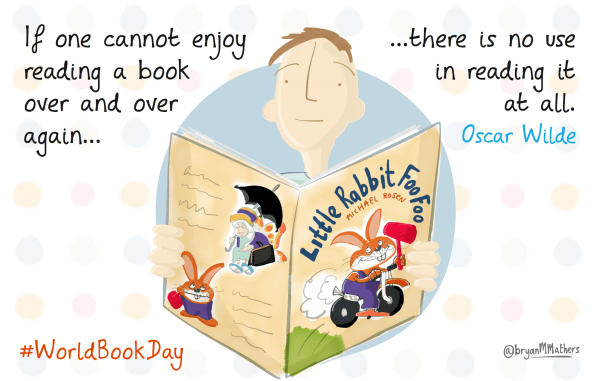The unfortunate byproduct of growing older, is that you sometimes think things used to be better. The worst-case-scenario, leaves you speaking phrases like, “the good old days.” This is tedious for bystanders. It’s also a red flag for being resistant to change.
As I look around, I’m excited. We’re equipped with amazing tools. Great ideas are everywhere. I feel like we’re part of a collective evolution that accelerates daily. At the same time, I fear that we’ve lost something valuable—that we ought to fight to get back.
“Yo! Check this out guys—this is insanely great. It’s got a 28.8 BPS modem…”
BLEEEEE-BA-BA-BLEEEE-BA-BA-DEEEE-DLE-DEE-DEE… That’s a sound I’ll never forget. After it ended, I might get new email (a thrilling prospect, at the time). I could find a higher number on my page counter. Maybe I’d discover some interesting web pages. Or, I might get some new shareware. My only fear? That I was nearing the end of my monthly time allowance.
Truthfully, part of it sucked. Search was impossibly bad (and gamed by those who loaded the bottom of their webpages with keywords colored to match the background). Getting around the web was so difficult that companies printed guide books listing “hot“ websites. Meanwhile, pages
.
.
.
.
.
.
loaded
.
.
.
.
.
.
.
very
.
.
.
.
.
.
very
.
.
.
.
.
.
very
.
.
.
.
.
.
.
.
.
.
.
.
.
.
.
.
.
.
.
.
.
.
.
.
.
.
.
.
.
.
.
.
.
.
.
.
.
.
.
.
.
.
slowly.
Those speed restrictions were awfully limiting. Notions like streaming video seemed like a fantasy. And the whole experience was a far cry from the promises made by movies like Hackers, Disclosure, and The Lawnmower Man.

Better?
The web today is amazing! Flickr automatically sorts my photos. Siri converts miles to kilometers, when I ask it to. (Sometimes it even cracks some, almost funny, jokes.) Google makes suggestions as though it actually knows where I am and what I’m doing. And it seems as though Facebook’s Oculus Rift will make for some remarkable porn viewing.
In no way do I want to trade the technology of today for that of 1996. But, I often feel this tingling sensation at the base of my neck, as though I’m walking into an unsafe place. Part of me reads the last sentence thinking it’s reasonable; the other says I’m being hyperbolic. Regardless, I’ll continue.
Startups are the new rock bands: people start them not because they love making stuff, but because they want to win the lottery. This sentiment becomes ever more real by salivating VCs who happily play big-shot with someone else’s money. And that’s the rub: it’s all about dough.
Startup talk is less and less about how much good something could do, and how it might benefit society. Such notions are now relegated to marketing copy and promotional videos. Instead it’s all about growth hacking (barf), disruption (double barf), valuations, IPOs, and other garden-variety fuckwhitery™.
I might seem anti-business and anti-profit, now. I’m not, though. Actually, I’m fine with both of those things; but, business and profit aren’t ends in themselves. Profit helps keep an organization healthy, allowing you to live a decent life, and keep working on something worthwhile. A business with no purpose other than to generate a 100x valuation is another story.
Put another way: We’re on a spaceship with 7.125 billion passengers, and finite resources. Greed motivates, but it’s not sustainable, healthy, nor admirable—no matter how much American media would like us to think it is. (Guys like Jordan Belfort shouldn’t hold motivational seminars. They should be in hiding to avoid getting curb-stomped.)
Laziness won
Aside from the occasional dim-witted, A-type, Boiler-Room-esque jerk, few actually believe they should strive for obscene wealth. Sure, we all like the idea of not running short on cash. Nevertheless, I doubt that most people wake up in the morning all wet for a bigger bank balance.
Similarly, few of us consciously opt into monocultures. We like the idea of vibrant, diverse, and pluralistic communities. Our true shortcoming is laziness. This characteristic fuels advancement and ingenuity (i.e., we make tools to save us from manual labor). It also leads us to make bad decisions because we’ll almost always take the shortcut.
Folks want Slack to kill email, but why? It’s noisier than email ever was, and it’s closed. Email is a beautiful platform that anyone can build for. But, humans often succumb to bad habits, and this makes email bothersome. It’s not email’s problem that you can’t deal with it efficiently. It’s that you’re too lazy to keep on top of it.
Most wouldn’t relinquish the content they create to a third-party—without some compensation. So, the people at Medium identify the friction you experience and they remove it. You don’t need to design, code, host, or administer your own blog; Medium does that for you. More importantly, it saves you effort by allowing you tap into an existing audience. This sort of convenience is hard to pass up.
Think I’m exaggerating? Medium’s Ev Williams already said it: “[The web] is not a utopia. It’s not magical. It’s simply an engine of convenience. Those who can tune that engine well—who solve basic human problems with greater speed and simplicity than those who came before—will profit immensely.”
This same pattern is ever-present on the web. You could use Affinity Designer, but Adobe’s Creative Cloud is already installed. You could use DuckDuckGo, but you’re so familiar with Google. You could hunt around the web, looking for interesting things, but it’s easier to check your Facebook feed.
Convenience isn’t the devil. It’s often indicative of a well built solution. That said, it’s also a powerful means of getting you to do things that you otherwise might not. This might be the reason why McDonald’s still exists, in spite of most knowing how unwise it is to eat there.
The seemingly small—but massive—switch
Ev’s comment above is both enlightening and concerning. He’s quite likely right about the link between convenience and riches. That’s not necessarily a good thing, though. What Ev treats as a trap-door to wealth, I see as an awful truth that we should rally against.
Sure, that Happy Meal is convenient. And, yes, McDonald’s built an empire based on that fact. Nevertheless, do you feed your kid a meal there, knowing how bad it is? Or, do you put in the work to learn about nutrition and instead cook real meals, in consideration of what’s best for your child? Just because someone can make a buck off how tired/overwhelmed we are, doesn’t mean we should let them.
The same stands for Medium. Posting there is easy, but it’s part of what’s creating a monopolistic web. The web is meant to be open, diverse, and unrestricted. Putting so much into so few leaves more at risk than we might realize.
We should applaud Apple for not caving to the U.S. Justice Department’s recent demands. We should also ask ourselves whether one company should be able to unlock all that data, in the first place. But, I digress.
The quintessential difference between the web of 1996 and the web of 2016, is in how we interface with it. The web of the ’90s was about discovery: What neat thing would you uncover today? This took work. You had to root around and try to find something good. You’d often wade through a fair amount of crap, along the way. Meanwhile, there was no promise you’d end up finding anything noteworthy.
Today’s web is infinitely more convenient. You don’t need to look far to find some morsel of distraction. I suspect the people at Facebook would rather you not stray too much. They’ll do all the hard work for you, by continually providing new content through their feed. That word should concern you: feed. This web is now about consumption. In this version of the web, we are neither hunters nor builders. We are cattle, fattened up for profit. We went from a world of millions of options to just a few troughs1. We no longer choose what to look at, so much as we pick which algorithm will feed us.
Some choose Twitter or Tumblr. Others are more motivated by personal gain, and use LinkedIn. Some go to Pinterest, YouTube, or Snapchat. Others go the high indulgence route, and stick with PornTube. But I say Facebook gets the trophy for perfecting the eyeball hijacking machine. So long as we stay in that comfortable place, we are continually fed, even if never satiated.
Don’t want to pay? Someone else will…
I don’t think any of these companies started out with malicious intent. That’s rarely the motivation that drives a founder to take such risks. My bet is that success took most of these people by surprise. I also gather what came next was something they never would have anticipated.
So, I’m not pointing a finger at any one individual. Instead, I think this all comes back to human weaknesses playing out on a global scale. You can drive to work or ride your bike. Individually, that choice affects your personal well-being. Packed together with all your neighbours, though, there’s a greater cost. Poor physical fitness and lagging health weighs down our medical system. In turn, this affects us all.
Similarly, the convenient tools we have on the web are wonderful. Nevertheless, they cost money to build and maintain, and few of us are eager to pay—even a paltry sum—for this to happen. The consequence is that profit-motivated individuals ante up. They know that you’ll trade options, variety, and privacy for something that’s cheap and easy. Later, they’ll profit from this.
Big companies aren’t made up of bad people. Like other organisms, though, they prioritize survival over other matters. The concerning part here relates to scale and reach. A street thug’s ability to do damage is somewhat limited. However, that same personality type in the Oval Office presents staggering risk. Perhaps I’m reaching here. What I’m trying to get at is that consolidating power is often hazardous.
We vote with our actions
This isn’t some cry for technology to stop, or for us to put flowers in our hair and join communes (although that does sound sort of relaxing). Instead, I think there’s a continual ebb and flow as technology evolves. For a stretch we see power consolidate; then, this shifts and we find ourselves in more democratic/distributed times. (Admittedly, there are varying undercurrents and patterns at work even as these larger waves pass.)
I’m not asking you to be fearful. But, I do think we should remain aware of what’s taking place. I also feel like you and I have a say in what happens. The apps we install, the groups we support, the stories we share, the initiatives we back… These seemingly small actions, are in fact important choices—when made at scale. And these don’t have to be compromises.
What we might have forgotten about that old web, is that it was actually kind of fun. Sure, we still have a lot of fun on the web, but some of this is more of a semblance of fun. (E.g. When you browse Facebook, thinking it’s fun, only to feel depleted and envious of others.) The fun isn’t in passively watching other things happen. It’s in exploring, building, and participating for ourselves.
So, turn off Facebook and go find something online that few others even know about. Or, go build something of your own that interests you. Or, get involved with a group of people, and do something without using the prefabricated options. You aren’t a renter; this is your house. Do something with it.
Notes:
1. This became even more evident to me when a colleague recently sent me an email noting:
“So, I spent the last 6 weeks teaching an intro to UI/UX, with the end goal of delivering a series of page mockups showing students awareness of UI patterns, design, the works. And they did all the research steps, and the wireframes were decent, but the finished designs were were largely uninspired. Not awful, just, ‘stuff we would have made 15 years ago.’ And when I was going through the crit, I figured out why.
Kids don’t use the web any more. They use Facebook, YouTube, the horrible online interface for the learning management tool at the school, and they use their phones. No one has any visual literacy for bleeding edge web design because they don’t see it anywhere. Which means they don’t see the need for it. Which is something I should have thought of.”




 I also found this recent movie from Canada where a park ranger and a park visitor (just guessing, however) are singing what is perhaps Canada’s national anthem. So yes, they speak english. (However, they have another language on their traffic signs, French, I think, but I have no idea what nutoarrit means in french..)
I also found this recent movie from Canada where a park ranger and a park visitor (just guessing, however) are singing what is perhaps Canada’s national anthem. So yes, they speak english. (However, they have another language on their traffic signs, French, I think, but I have no idea what nutoarrit means in french..)




























 Samsung’s latest flagships bear powerful cameras with a focus on low-light performance, but how does it compare to The Competition’s camera?
Samsung’s latest flagships bear powerful cameras with a focus on low-light performance, but how does it compare to The Competition’s camera?



